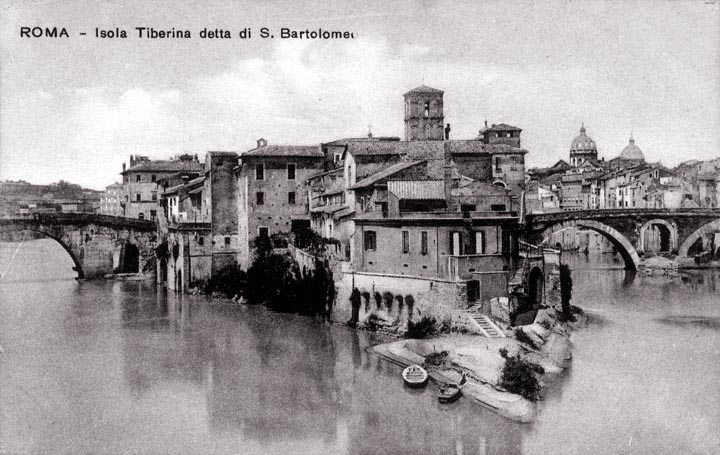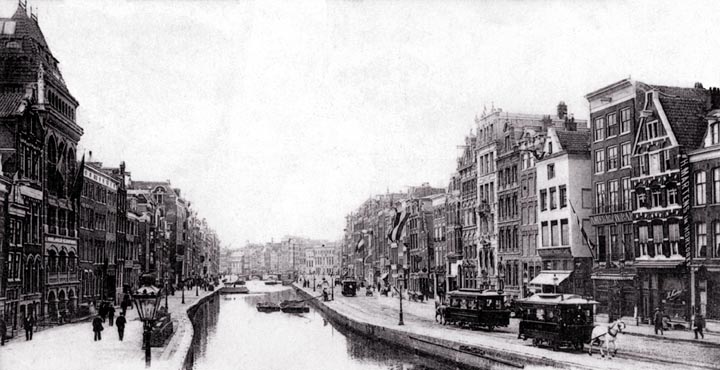
It is not unusual for islands to develop in the middle of rivers, as is also the case in Paris. These sites are often used when bridging the river and are often some of the earliest sites developed, due to their inherently good defensive properties. Here, not all of the island has been walled against periodic flooding - a small triangular beach has been left, and it seems to be used by fishing skiffs.
Look carefully at this scene. For reasons that I cannot yet articulate, it evokes in me a sense of almost perfect peace, of permanence, and security. Yet it is not a highly ordered place, even though it may be highly organized. Organization stems from the inherent demands of the site and of the people who use it. Order can be imposed, from above if necessary, on almost any site (think of San Francisco's rigid grid pattern of streets, which ignores the steep terrain). Order may make a place more immediately comprehensible to strangers, but it is no substitute for organization, which is generally associated not with grid patterns but radial patterns. It is the usual nature of things that a given place will have one or more important centers. When that place is well organized, the streets will tend to converge on those places. When order has been superimposed, the pattern of the streets is no guide to where the important places are to be found. This is a subtle point, and one I am still developing, but I believe that it is of considerable importance.
|
 Next City Design Home
E-mail |